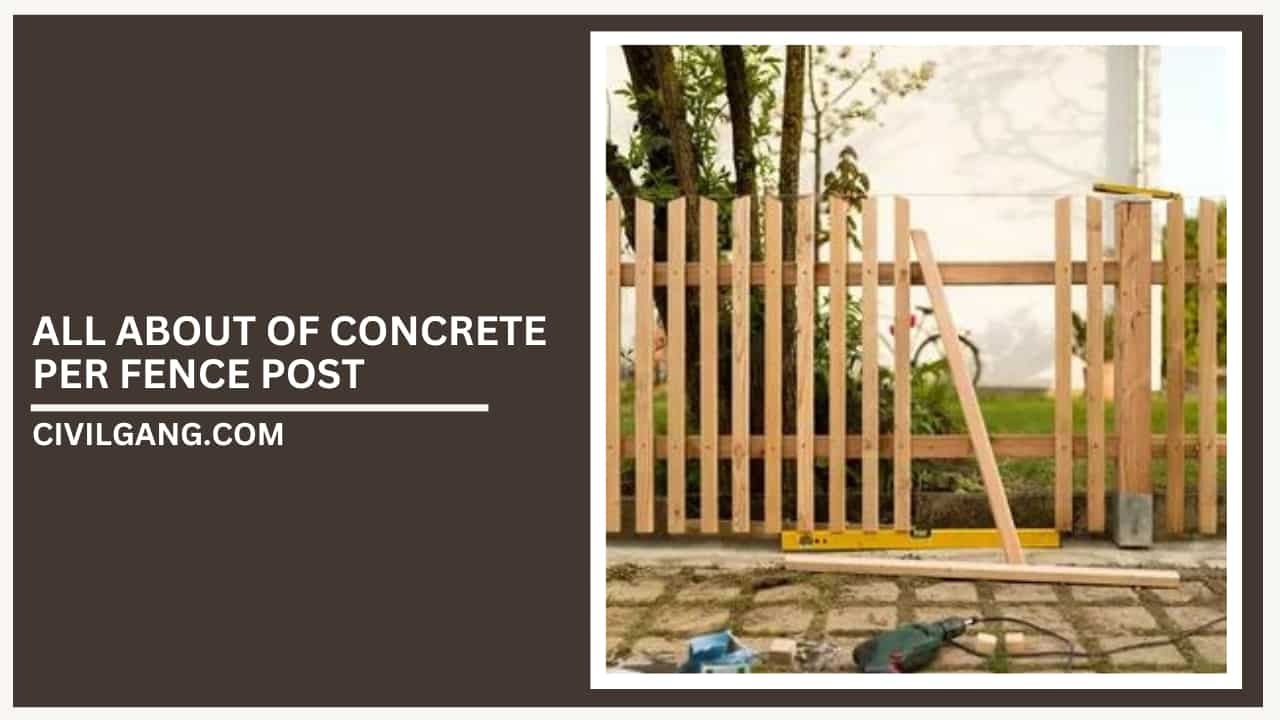
How Many Bags Of Concrete Per Fence Post?
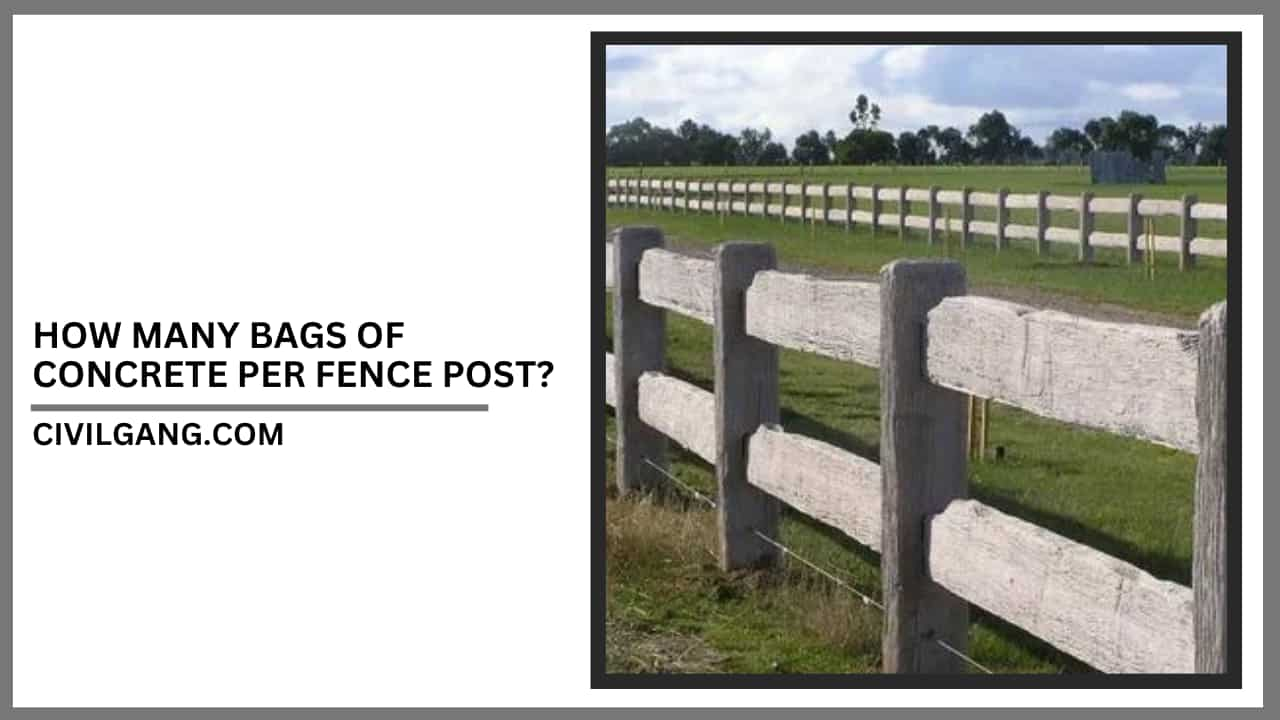
Typically, one to four bags of concrete per post is required for each fence post.
Soil type, fence design, post size, and bag weight all play a role in how much soil is required to build a fence.
Soil type, fence design, post size, and bag weight all play a role in how much soil is required to build a fence.
As a general rule of thumb, the post hole should be 1/3 to 1/2 the post’s height above ground.
In other words, a six-foot fence post should be buried between 2-3 feet deep.
If the soil is sandy or clay-based, this will affect how long the fence will last. The diameter of the post hole should be approximately three times the diameter of the post.
A 12-inch post hole should be used for any post that is four inches in diameter, such as a four-inch round or four-inch square post.
A 36-inch-deep hole with a 12-inch -diameter is required for a six-foot-high fence post with a 4-inch post.
It takes 5 bags of 80lb concrete to fill this hole, but remember to remove the post volume you’ll be burying from that total.
When considering how many bags of concrete for fence post installations, and when you include the fence post, the total number of bags needed is four.
To accurately gauge the size of each fence post hole, use the following formula:
- The hole’s diameter is three times greater than the fence post’s width.
- The hole is about a third to half the height of the fence post above ground.
You can use the fence post depth chart below to determine how many bags of concrete you need for each fence post once you know the dimensions of your holes.
How Many Concrete Bags Per Fence Post Chart?
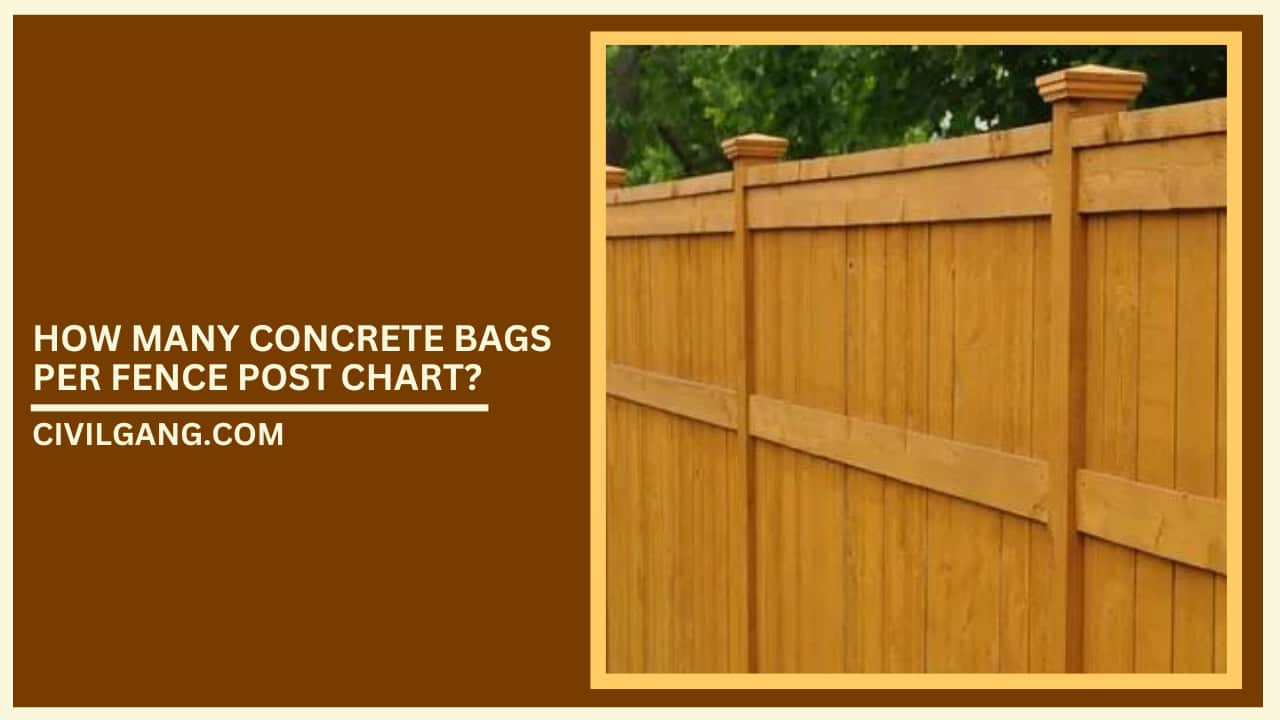
Here’s a simple chart to help you out. To make things easy, I imagined each sack to be 50 pounds.
With some arithmetic, you can figure out how many different-sized bags you’ll need.
To determine the overall weight of your bags, add them all together and then divide the total weight by the number of bags you have.
Two 50-pound bags of concrete are needed to fill the 10 inches of space between a 4-inch post and the 12-inch hole. The result is 100 pounds of concrete when they are put together.
you have 80 pounds in your luggage and your bag size is 1 and a quarter, you get one and a quarter bags.
3″ Post 4″ Post 6″ Post | 9″ Hole |12″ Hole |18″ Hole
| Depth | Bags | Depth | Bags | Depth | Bags |
| 10 | 1 | 10 | 2 | 10 | 4 |
| 12 | 1 | 12 | 2 | 12 | 4 |
| 14 | 2 | 14 | 2 | 14 | 5 |
| 16 | 2 | 16 | 3 | 16 | 5 |
| 18 | 2 | 18 | 3 | 18 | 6 |
| 20 | 2 | 20 | 3 | 20 | 6 |
| 22 | 2 | 22 | 3 | 22 | 7 |
| 24 | 2 | 24 | 4 | 24 | 7 |
| 26 | 2 | 26 | 4 | 26 | 8 |
| 28 | 3 | 28 | 4 | 28 | 9 |
| 30 | 3 | 30 | 4 | 30 | 10 |
| 32 | 3 | 32 | 5 | 32 | 10 |
| 34 | 3 | 34 | 5 | 34 | 10 |
| 36 | 3 | 36 | 5 | 36 | 11 |
What’s The Best Concrete Mix To Use On Fence Posts?
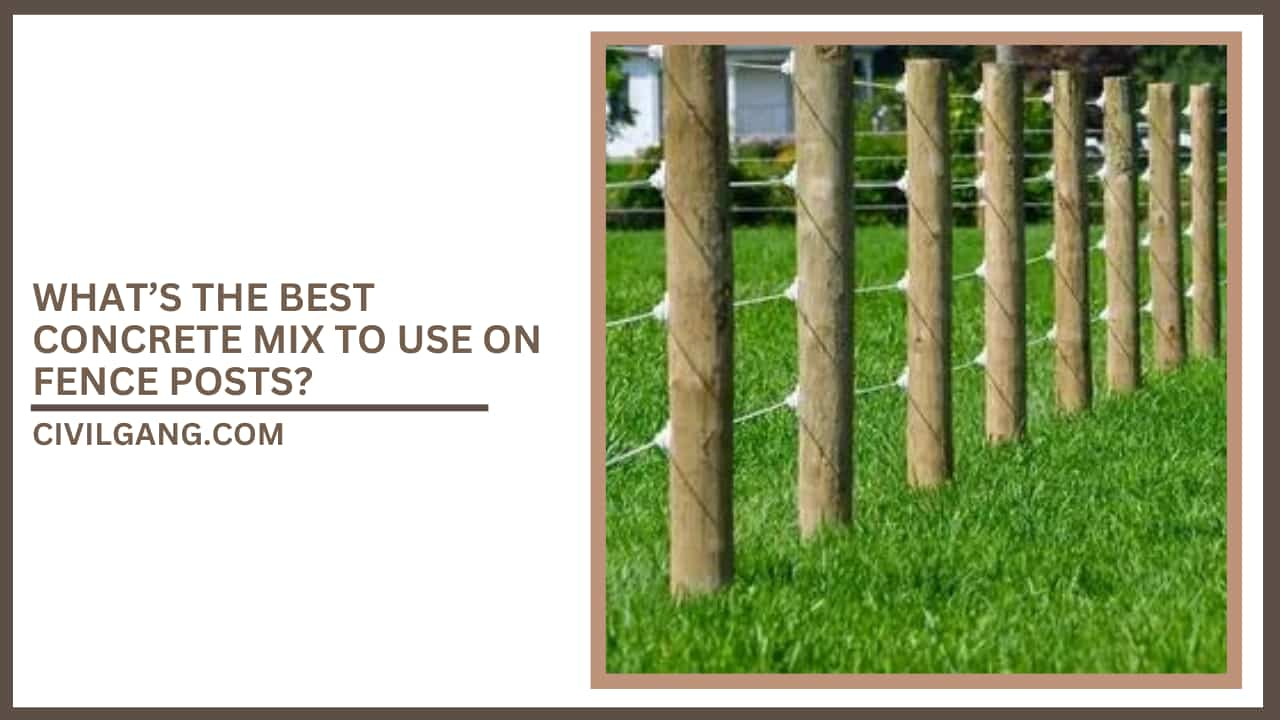
Setting up in a jiffy Pre-mixed refractory cement mix is a wonderful choice for setting fence posts because of its simplicity and ease of usage.
The following two concrete mixtures are my personal favorites for setting fence posts:
- Quick-setting concrete mix by Quikrete
- Concrete for Sakrete Fence posts.
Both of this pre-mixed concrete can be poured dry into the hole because they are already blended. In the long run, this can save both time and money.
Also, they can be set up in about 20 to 40 minutes, which will help you get things done even quicker.
Temperature and humidity can affect the time it takes for a product to fully cure.
I recommend waiting at least a few hours before putting up your fence parts.
Setting fence posts may be done with any ordinary concrete mix, provided you are not in a rush.
Fast setting mixes are what I prefer because of how simple they are to utilize.
Wait until the following day to build your fence with a standard setting mix rather than a rapid setting one.
Pour your concrete when it’s dry outside and the temperature outside is between 50 and 90 degrees Fahrenheit.
Your home should be filled only with water you pour into it.
The concrete may crack if the weather is too hot. It won’t cure effectively if it’s too chilly. Concrete will be weakened in both cases.
Should I Use Concrete For Fence Posts?
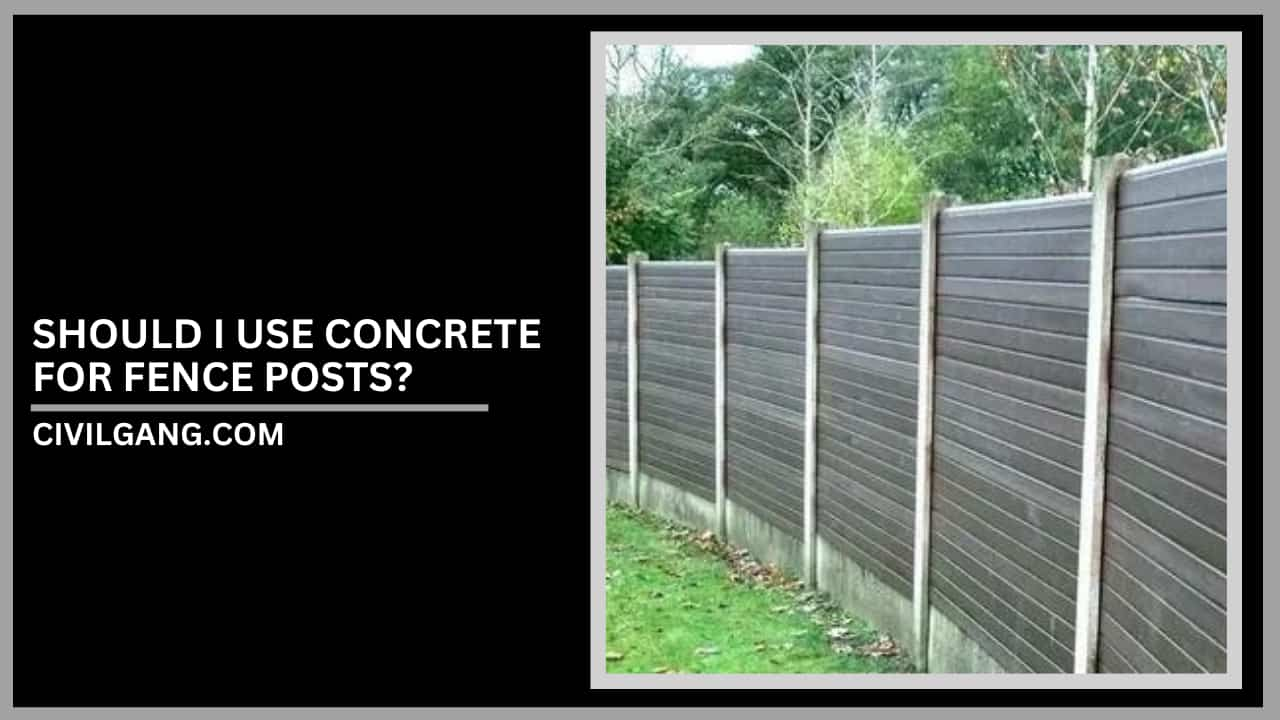
The strength of a fence can only be determined by its foundation. In addition, concrete is extremely resilient and powerful. To keep your fence sturdy and level, this is an excellent method for securing fence posts into place.
The force of a wind gust might be extremely devastating if you reside in a particularly breezy region.
For strong fences, using concrete is also advantageous.
The stronger the posts, the greater stress is exerted on the fence.
Installing fence posts in concrete provides a solid foundation for your fence.
This presumes you’ve dug the correct-sized hole and used the appropriate number of bags. There is a danger in digging too shallow or relying on too few bags.
Here are a few things to keep in mind when putting in concrete posts:
- Pressure-treated wood or wood that is naturally weather-resistant are the best options for wooden fence posts.
- The preservative is required if you are using a non-weather-treated wooden post; otherwise, the post will decay.
- Rainwater will drain more easily if a gravel base is beneath the concrete.
- Concrete should be tapered away from the fence post so that water can flow away from the post and away from the concrete surface below.
- Caulk around the concrete post where it emerges. A minor hole might allow water to seep into the post, weakening it over time.
- Concrete is an excellent choice for fence posts made of metal, concrete, or wood, as well as for any style of fence, including those with chain link fence privacy slats or chain link fence slats.
How Much Concrete For A 3×3 Fence Post?
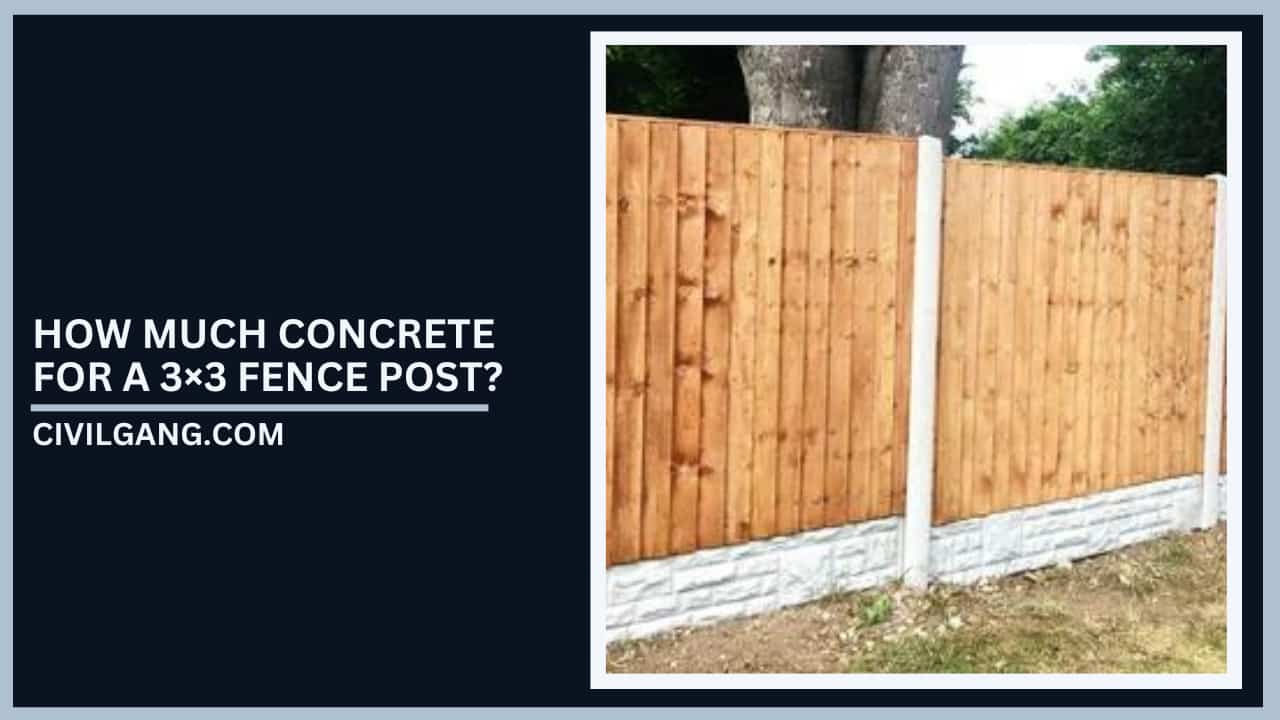
The post hole for a fence post with a diameter of 3 inches should be roughly 9 inches in diameter. The post’s depth below the surface should be approximately one-third of the post’s height above the surface.
For example, a six-foot-tall post will require a two-foot-deep hole to support it.
The chart below shows how many bags of concrete you need to fill a 9′′ diameter hole at various depths.
| Depth | 50 Lb bags |
| 10″-12″ | 1 |
| 14″-26 | 2 |
| 27″-36″ | 3 |
Figures are based on a fence post that’s 6′ above ground and 2′ below.
How Much Concrete For A 4×4 Fence Post?

The post hole for a 4′′ fence post should be around 12′′ in diameter.
The post’s depth below the surface should be approximately one-third of the post’s height above the surface. For example, a 5-foot-tall post requires a hole that is roughly a foot and a half deep.
Figure out how many bags of concrete you need to fill a 12″ diameter hole at various depths from the chart below.
| Depth | 50 Lb Bags |
| 10″-14″ | 2 |
| 16″-22″ | 3 |
| 24″-30″ | 4 |
| 32″-36″ | 5 |
Figures are based on a fence post that’s 6′ above ground and 2′ below.
How Much Concrete For A 6×6 Fence Post?
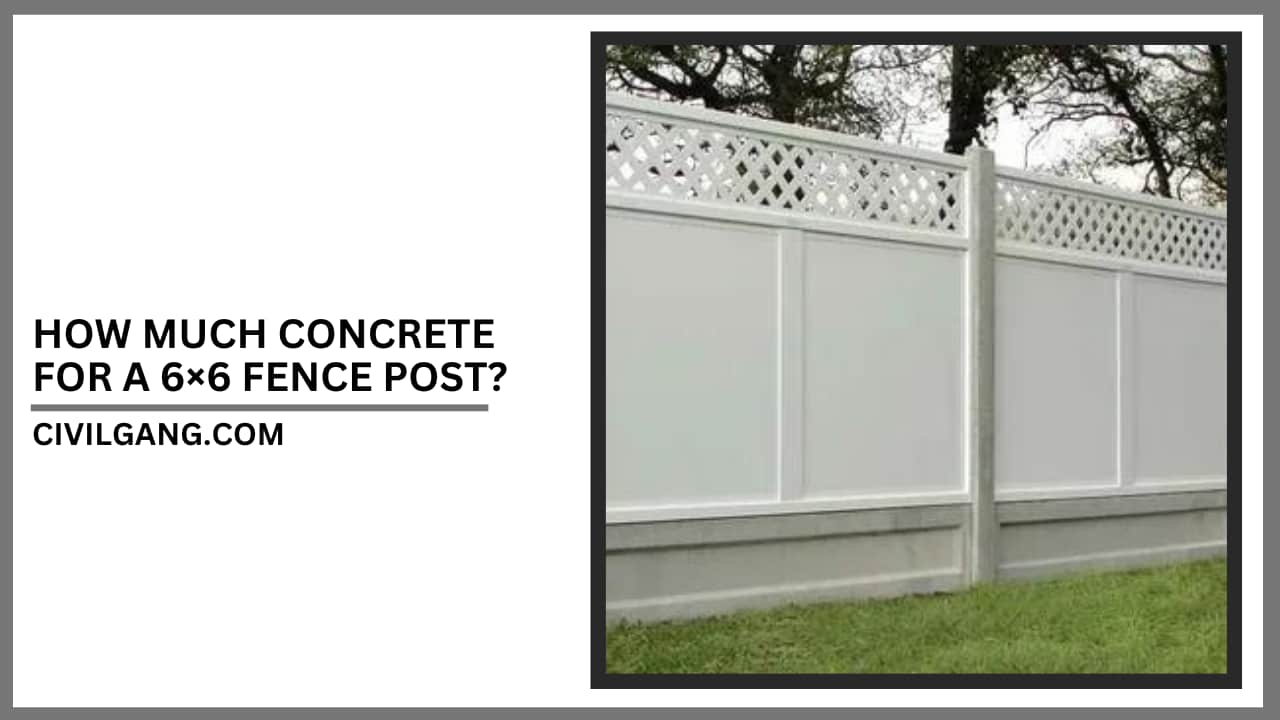
The post hole for a 6-inch fence post should be 18 inches in diameter.
The post’s depth below the surface should be approximately one-third of the post’s height above the surface. For example, a 7-foot-tall post will require a two-and-a-quarter-foot-deep hole.
For a hole with a diameter of 18 inches and a depth ranging from 10 to 36 inches, the table below illustrates how many bags of concrete you’ll need per fence post.
| Depth | 50 Lb Bags |
| 10″-12″ | 4 |
| 13″-17″ | 5 |
| 18″-21″ | 6 |
| 22″-25″ | 7 |
| 26″-28″ | 8 |
| 28″-30″ | 9 |
| 32″-36″ | 10 |
Figures are based on a fence post that’s 6′ above ground and 2′ below.
Do Soil Conditions Matter?
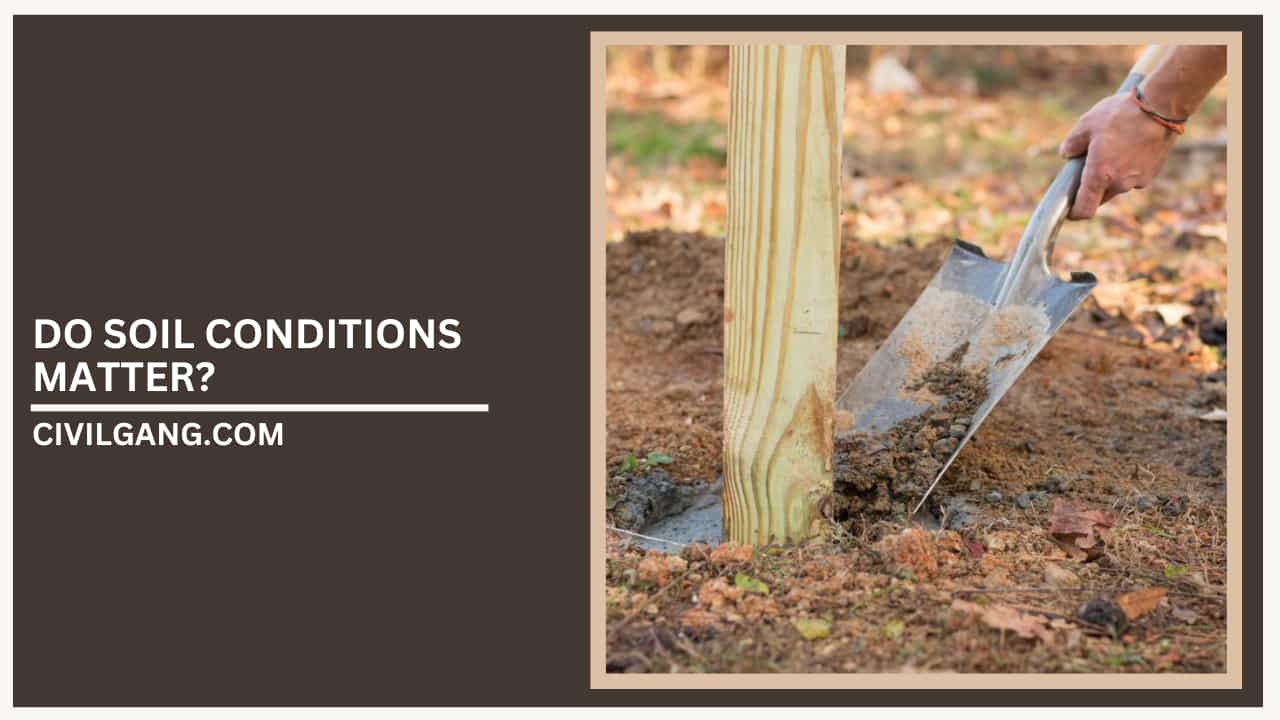
Yes, especially when considering the phosphorus uptake by plants.
It’s possible to fine-tune the depth and diameter of the hole depending on the soil’s texture. I’d think 10% – 15% is a good place to start. I, on the other hand, am a stickler for going large and going overboard.
Instead of not having enough concrete, I’d much prefer to have my fence posts fully concreted.
As with any building project, you must base your judgments on the current state of the site.
All of these measures are meant to be a broad guideline. There is no standard fence.
There is no one-size-fits-all solution when it comes to choosing the right fence for your yard. Make necessary alterations.
Do what I do when I’m unsure and go biFor those considering 6ft fence panels, using concrete is also advantageous for strong fences. gger.
Assume you’re putting in a fence post in rocky or clay-rich soil. Because the dirt is so dense, you may get away with digging a smaller hole.
Soil must give way in order for the fence post to fall, and this is more difficult in soil that is dense.
Then imagine you’ve got sandy soil that doesn’t hold up well. In this situation, I’d dig a hole that was both larger and deeper.
To compensate for the lack of support provided by the soil, you’ll need to rely on concrete.
If you’ve got a mix of soil and grass, I’d stay to the recommended sizes on the charts.
Cement Or Concrete For Fence Posts?
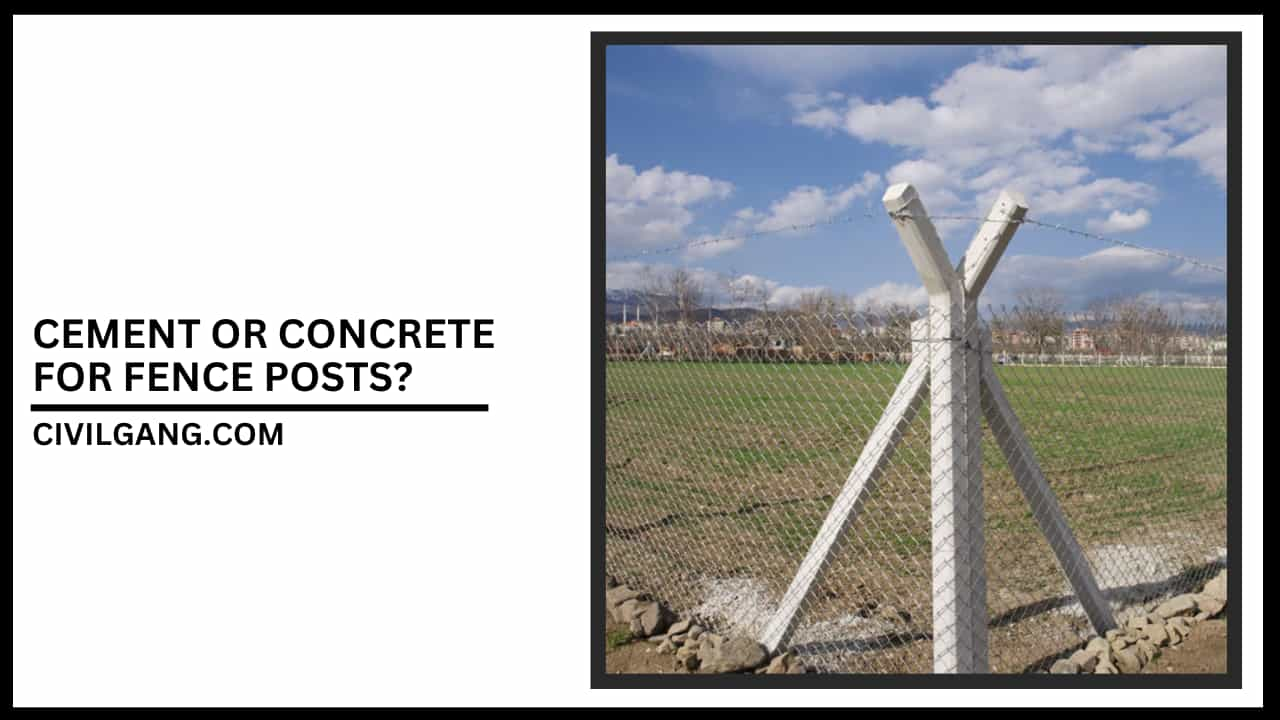
For a fence post, concrete should always be preferred over cement.
Cement, stone, and sand are all combined with water to make concrete.
The aggregate of stone and sand is very strong, and the cement holds it all together. Concrete is incredibly durable, weatherproof, and sturdy.
It’s also quite hefty, which makes it an excellent anchor for a post. Almost every large-scale foundation, building, bridge, or dam employs it for a good reason.
Cement is more brittle and more likely to crack. Using it as a thin coating or a filler-like grout makes it a good binding agent.
Cement, on the other hand, should not be used for anything structural, such as supporting a fence post.
3* Post 4* Post 6* Post |9* Hole |12* Hole |18* Hole
| Depth | Bags | Depth | Bags | Depth | Bags |
| 10 | 1 | 10 | 2 | 10 | 4 |
| 12 | 1 | 12 | 2 | 12 | 4 |
| 14 | 2 | 14 | 2 | 14 | 5 |
| 16 | 2 | 16 | 3 | 16 | 5 |
| 18 | 2 | 18 | 3 | 18 | 6 |
| 20 | 2 | 20 | 3 | 20 | 6 |
| 22 | 2 | 22 | 3 | 22 | 6 |
| 24 | 2 | 24 | 3 | 24 | 7 |
| 26 | 2 | 26 | 4 | 26 | 7 |
| 28 | 2 | 28 | 4 | 28 | 8 |
| 30 | 3 | 30 | 4 | 30 | 9 |
| 32 | 3 | 32 | 4 | 32 | 10 |
| 34 | 3 | 34 | 5 | 34 | 10 |
| 36 | 3 | 36 | 5 | 36 | 10 |
Is Quikrete The Same As Concrete For Fence Posts?
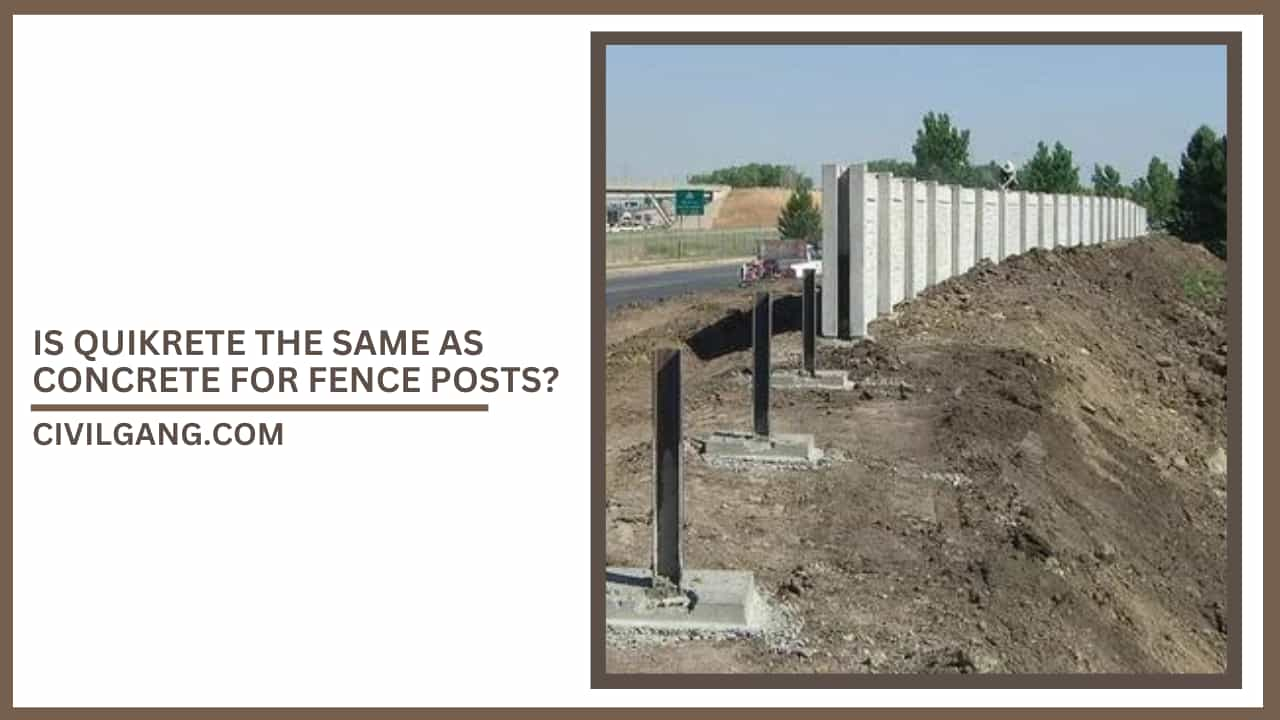
Yes. All of these charts are based on ready-mix concrete in 50-pound bags. My go-to brand is Quikrete, but I’ve also had good luck with Sakrete.
Factory-mixed bagged concrete can be purchased from a slew of suppliers. Buying the right PSI for the job at hand is the most important thing you can do.
When installing a fence post, I prefer to use at least 3500.
Use fast-setting cement as well. Because I can start erecting my fence the same day, it makes my job a lot simpler.
Call First Before You Dig
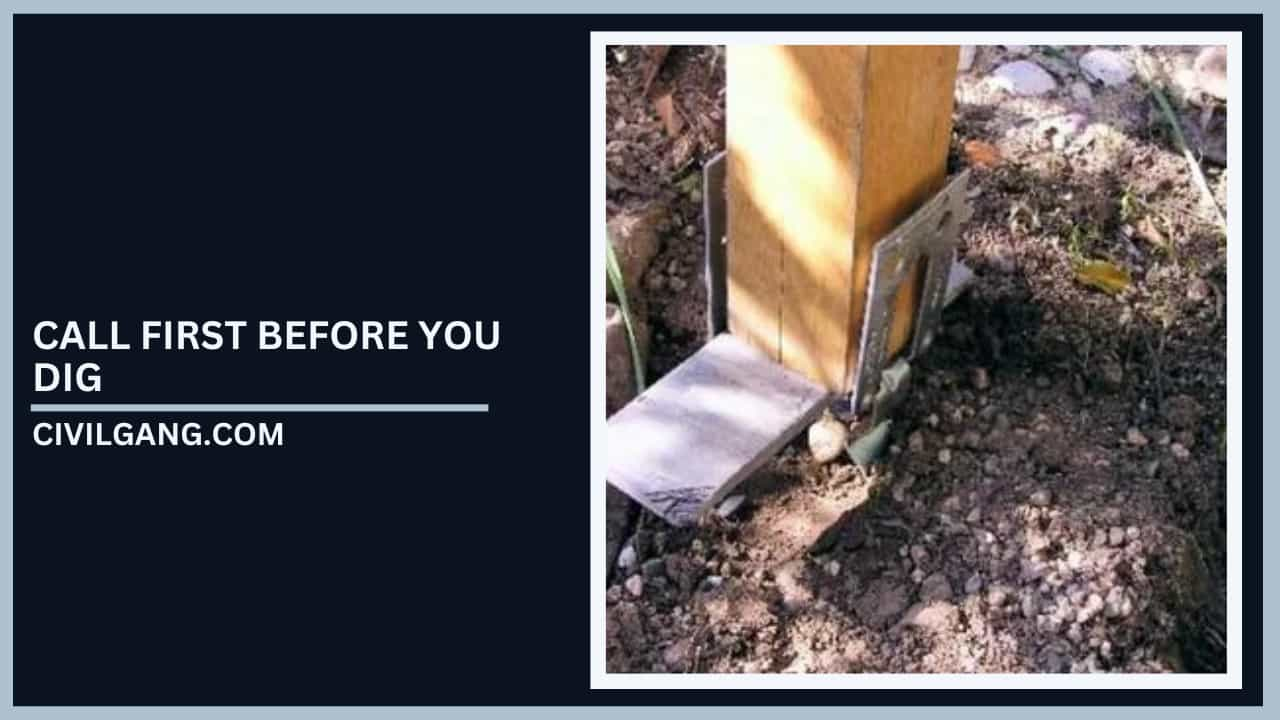
If you’re digging on your property, it’s a good idea to arrange for a mark-out.
If you don’t live in the country or own a large piece of land, you run the risk of hitting some underground services.
As a precaution, have the local utility companies label any gas or electric lines that may be in your path before you begin excavating.
It’s free and just takes a few days in New Jersey, so there’s no excuse not to call.
For further information on zoning, permits, and other requirements, contact your local building inspector’s office.
How many bags of concrete do you need for a fence post per foot?
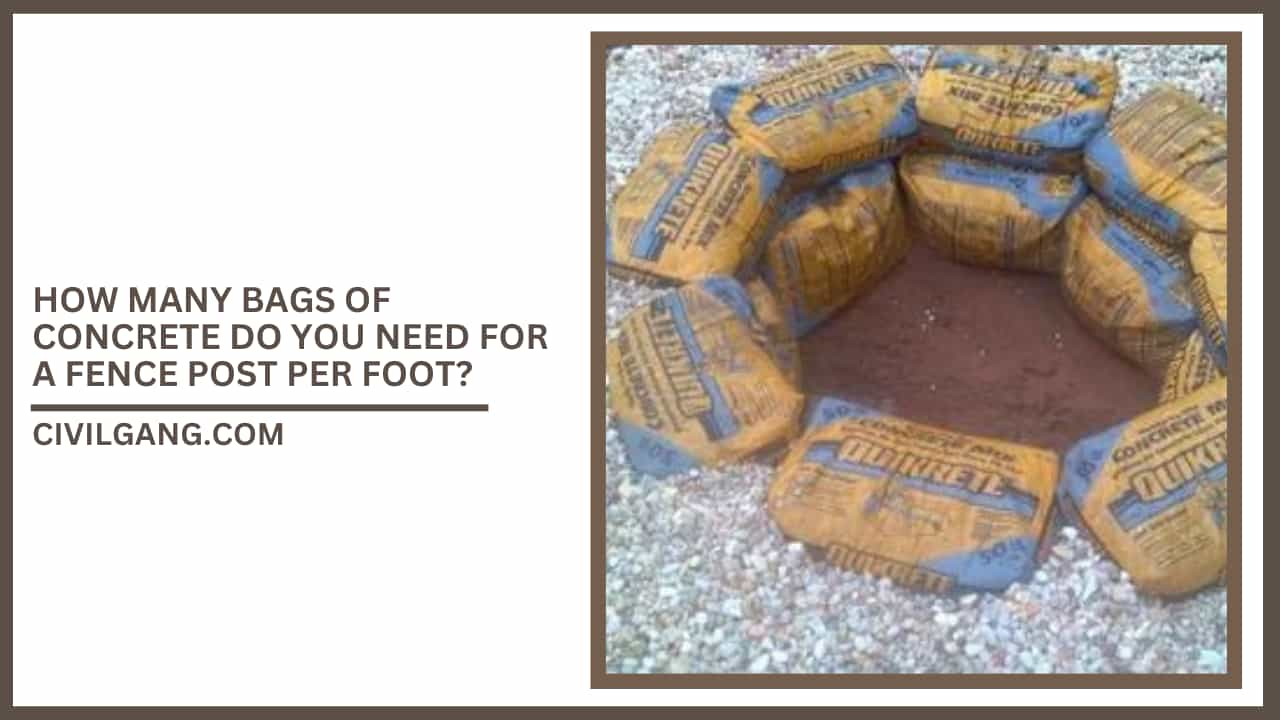
Typically, one to four bags of concrete is required for each fence post.
The type of soil, fence design, height, post size, and bag weight all have a role in determining how much dirt is needed.
There should be no more than 1/3 to 1/2 of the height of the post’s above-ground girth in the post’s hole. For example, a six-foot-high fence post should be buried at least two feet below the surface.
Based on the kind of soil and the design of the fence, this may differ.
Your post hole’s diameter should be three times as large as your post’s diameter.
For those using 4ft fence panels, a 12-inch post hole should be used for any post that is four inches in diameter.
A 36-inch-deep hole with a 12-inch-diameter diameter is required for a six-foot-high fence post with a 4-inch post.
To fill a hole of this size, you’ll need five 80-pound bags of concrete, but keep in mind that the volume of the post you’re burying must be taken into consideration.
When you include the fence post, you’ll need four bags of cement.
In order to calculate the size of each fence post hole, the ideal method is:
The hole’s diameter is three times the fence post’s width.
The hole should be 1/3 to half the height of the fence post above the ground.
For those looking to install iron fence panels, you may use the chart above to determine how many bags of concrete per fence post you need once you know the dimensions of your holes.
Frequently Asked Questions (FAQs):
How Much Concrete Per Fence Post?
1 – 4 bags of concrete per fence post are typically what’s needed. This depends on the type of soil, fence design, height, post size and bag weight. In general the depth of the post’s hole needs to be 1/3 to 1/2 of the above ground height of the post.
How Many Bags of Post Mix Per Hole?
Each 20kg bag produces approximately 10 litres of Concrete. Note: Use approximately 2 x 20kg of Post Mix bags per post hole.
How Many 80lb Bags of Concrete Per Fence Post?
For reference, a 40-pound bag of concrete typically yields about 0.3 cubic feet, a 50-pound bag yields 0.37 cubic feet, a 60-pound bag yields 0.45 cubic feet, and an 80-pound bag yields 0.6 feet. This means that in the example above, each post would require about eight 50-pound bags.
How Many Pounds of Concrete Per Fence Post?
A six foot high fence post with a 4 inch post would need a hole that’s 36 inches deep by 12 inches in diameter. To fill a hole this size takes 5 bags of 80lb concrete, but remember, you have to subtract the volume of the post your burying. When you account for the fence post what you need is 4 bags.
How Many 50-Pound Bags of Concrete Per Fence Post?
At least 2 bags per fence post, sometimes more depending on the size of the hole and the post.
How Much Concrete Per Chain Link Fence Post?
Each hole must be 6 inches in diameter and 24 inches deep for the line posts, requiring 0.4 cubic feet of concrete to fill.
How Much Concrete Do I Need for a 4×4 Post Hole?
A 4″ diameter fence post needs a post hole that’s about 12″ in diameter. The depth below ground should be about 1/3 the height of the post above ground.
| Depth | 50 Lb Bags |
| 10″-14″ | 2 |
| 16″-22″ | 3 |
| 24″30″ | 4 |
| 32″36″ | 5 |
How Deep Should an 8 Foot Post Be in the Ground?
How Deep Should a Fence Post Be? For an average fence post, about 6 to 8 feet tall, prepare to dig a post hole about 2 feet deep. To install a fence post, you’ll need a shovel or post digger, a 6-foot level, soil, and gravel or crushed stone. For gateposts, you’ll need concrete too.
What Is the Best Concrete Mix for Fence Posts?
The best concrete mix for fence posts I’ve found is Quikrete Fast Setting Concrete Mix in a 50 lb bag. It’s 4000 psi, easy to work with, sets up fast, and doesn’t need to be mixed. Just pour it in the hole and soak with water.
How Far Apart Should Fence Posts Be?
Most fence posts can be spaced 8 to 12 feet apart. While this is a general criteria, it doesn’t cover all scenarios. For instance, high tensile fence can have larger spacing, requiring line posts every 15 to 20 feet for field fence styles, and as much as 20-30 feet for high tensile barbed and smooth wire.
How Far Apart Should Fence Post Be for Woven Wire?
The most popular woven wire fence design is a 13-48-6 fence with posts spaced every 12 feet. Woven wire fences are often used for both cattle and horses, is popular because it is extremely secure.
How Far Apart Should Chain Link Fence Posts Be?
Chain link fence posts are typically spaced a maximum of ten feet apart. For aesthetic reasons, space posts evenly, but do NOT exceed ten feet between posts. If you plan on installing privacy slats or another type of material that will increase wind load, consider using 8′ or 6′ post spacing.
How Far Apart Should T Posts Be?
The writers from Civiconcepts provide an overview of T-posts and fencing in general, in which they determine that 8 to 12 feet apart between corner posts is okay. Corner posts can be safely spaced between 12 and 15 feet apart if you’re using high-strength posts and fencing material.
How Far Apart Should Fence Posts Be for Cattle?
Five (5) and six (6) strand fences can be planned when the cattle are wild and the additional fence strength is needed. Spacing posts 15 to 20 feet apart with stays inserted between the posts is recommended for most barbed wire fences.
How Far Apart Should H Braces Be?
Double H Brace Pull Assemblies: Double H Brace pull assemblies are required in straight fence spans at a maximum spacing of 660 feet. Brace wire shall be high tensile, galvanized steel, or 9 gauge soft wire.
How Far Apart Should Fence Posts Be for Horses?
Space line posts about 10 to 12 feet apart for most fences (25 feet for high-tensile wire fences). Narrow spacings are better over irregular ground and in contour fences. Rail fences normally have post spacings of 8 to 10 feet.
How Far Apart Should Fence Posts Be for Dogs?
It is recommended to place your posts every 7-8 ft depending on the type of animal you are trying to contain. Since I am not a large, heavy cow, we decided to go every 8-9 ft. T posts cost $3.49 for a 5 ft post and spacing them further out would cut costs. Remember, some of that height is going into the ground.
Fence Post Concrete Mix Ratio
In terms of the ratio to use for a concreting fence posts, the best mix is a mix of 1:2:4 (1 cement, 2 sand, 4 aggregate). Concrete is always best mixed using a cement mixer to ensure it’s even, but if you only need to mix a little, hand mixing is ok (see mixing concrete project above for tips on how to do this).
Fence Post Backfill Vs Concrete
Concrete is less expensive than expanding foam and is best used for load-bearing posts (even deck posts). It’s also more sturdy once set, so you’re less likely to deal with a leaning or sinking fence down the line. Mixing concrete is a pretty simple DIY, as long as you follow the mixing instructions.
How Much Concrete for Vinyl Fence Post?
| Post Size | Post Height (above surface) | 50lb Bags Required |
| 4×4 | 3-4ft double-triple rail9 inch hole | 1.5 |
| 5×5 | 3-4ft double-triple rail12 inch hole | 2 |
| 5×5 | 5-6ft semi & privacy12 | 3 |
Soil Condition Examples
Chemical characteristics include such properties as soil acidity, organic matter, and the ability to store and retain nutrients. Physical characteristics include stability of soil aggregates, compaction and water storage.
How Does Soil Affect Plant Growth?
Soil structure not only affects the ability of roots to grow and to supply the leaves with water and nutrients; if adverse, it also induces them to send hormonal signals that slow the growth of the shoot, even if they are currently able to take up adequate water and nutrients.
How Does Soil Ph Affect Plant Growth?
For most plants, the ideal soil pH is slightly acid or slightly alkaline. At extreme pH the availability of some nutrients is decreased, e.g. phosphorus and molybdenum at low pH, and zinc at high pH; and the solubility of elements toxic to plants is increased, e.g. aluminium and manganese at low pH.
How Does Salinity Affect Plant Growth?
Salinity affects production in crops, pastures and trees by interfering with nitrogen uptake, reducing growth and stopping plant reproduction. Some ions (particularly chloride) are toxic to plants and as the concentration of these ions increases, the plant is poisoned and dies.
How Does Water Ph Affect Plant Growth?
Water with low pH is problematic for several reasons. It can interfere with plant root growth by making the potting material too acidic. It can increase or decrease the solubility and availability of micronutrients. It can also cause minerals like iron to precipitate out and clog irrigation equipment.
Cement or Concrete for Fence Posts
Fast-setting concrete is ideal for installing fence posts since it doesn’t need to be mixed in a bucket or a wheelbarrow. Once you’ve finished digging your post holes, add about three to four inches of gravel into the bottom and compact it using a post or a 2×4.
Like this post? Share it with your friends!
- Septic System Options
- Types of Plumbing Traps
- Septic Systems for Clay Soil
- How Much Space Do You Need Around a Toilet?
- All Abut Wood Fence Panels to Metal Posts | Can You Attach Wood Fence Panels to Metal Posts | Comparison Between the Metal Fence and Wood Fence
- All About Regrout Tile Without Removing Old Grout | Can You Regrout Over Existing Grout | How to Regrout Tile Without Removing Grout
- All About Bathroom Wall Paneling Ideas | Bathroom Wall Panel Ideas | Top Bathroom Wall Paneling Ideas
Leave a Reply